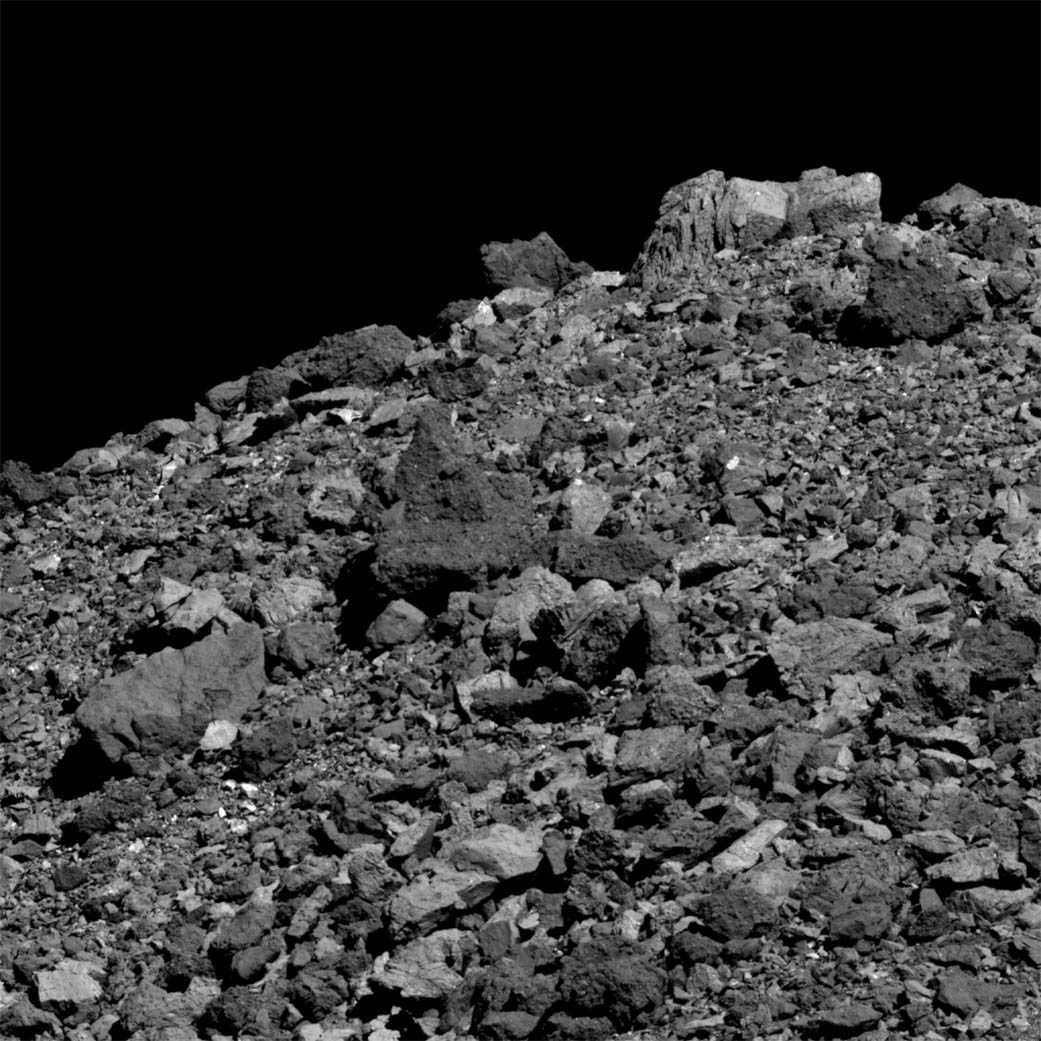
Research papers on Bennu have been coming out in droves these days as scientists analyze all the data collected by the OSIRIS-REx mission, and we have not one but two new papers today.
First up, in a new paper published in the journal Science Advances, a team of scientists characterized the layer of rock just below Bennu’s surface. They found that this layer is, as expected, loosely bound rock bits. They also found that this layer contains twice the void space as the overall asteroid. Lead author Kevin Walsh explains: The low gravity of rubble-pile asteroids such as Bennu weakens its near-subsurface by not compressing the upper layers, minimizing the influence of particle cohesion. We conclude that a low density, weakly bound subsurface layer should be a global property of Bennu, not just localized to the contact point.
Many of our community will recall that the Touch-and-Go portion of the mission did more than just “boop” our rocky little asteroid. The sampling arm actually plunged about half a meter into the asteroid itself, basically because of all that loose rock and void space. Not only that, but images taken by an onboard camera revealed the displacement of a 40-centimeter rock.
Oh, and that sample collection left behind a 9-meter-long elliptical crater. More on that research can be found in a companion paper published in the journal Science. We’ll have links to both papers in our show notes at DailySpace.org.
The rubble pile nature of asteroids like Bennu and the Hayabusa2 target Ryugu presented scientists with a new mystery to solve. Before the arrival of those two missions at their targets, astronomers expected to see a relatively smooth and dusty surface, sort of like our Moon. Instead, they found tons and tons of small rocks and boulders and dust… so many rocks and boulders. But that dust was intriguing.
And it turns out that rubble pile asteroids are not static in shape, but they are static when it comes to dust. In a new study published in Nature Astronomy, scientists detail the calculations and modeling done to understand the nature of dust in space, particularly at these rubble pile asteroids. First off is the action called “electrostatic lofting. Co-lead author Xu Wang explains: …as the sun’s rays bathe patches of porous regolith, negative charges start to build up on small grains of dust. Those charges will accumulate until, suddenly, the particles burst apart, like two magnets repelling each other.
And these grains of dust can fly away at more than eight meters per second. But from the models, this mechanism only works on smaller asteroids, where these grains of dust can actually be lost to space. That loss causes more erosion as more of the surface is exposed to stellar winds and sunlight, until eventually, the asteroid will be clean of dust but be covered in, well, rocks and rocks and rocks and boulders and rocks.
Oh, and this strange electrostatic scrubbing effect could cause changes in the asteroid’s orbit as well, and we’ll know more about how that could work after the Double Asteroid Redirection Test does more than boop a tiny asteroid moonlet.
More Information
Bennu’s rubble pile surface full of voids
- SwRI press release
- “Near-zero cohesion and loose packing of Bennu’s near subsurface revealed by spacecraft contact,” Kevin J. Walsh et al., 2022 July 7, Science Advances
- “Spacecraft sample collection and subsurface excavation of asteroid (101955) Bennu,” D. S. Lauretta et al., 2022 July 7, Science
Studying how dust hops, shapes asteroids
- University of Colorado press release
- “Fine-grained regolith loss on sub-km asteroids,” Hsiang-Wen Hsu et al., 2022 July 11, Nature Astronomy




 Join the Crew!
Join the Crew!
 Escape Velocity Space News
Escape Velocity Space News
0 Comments